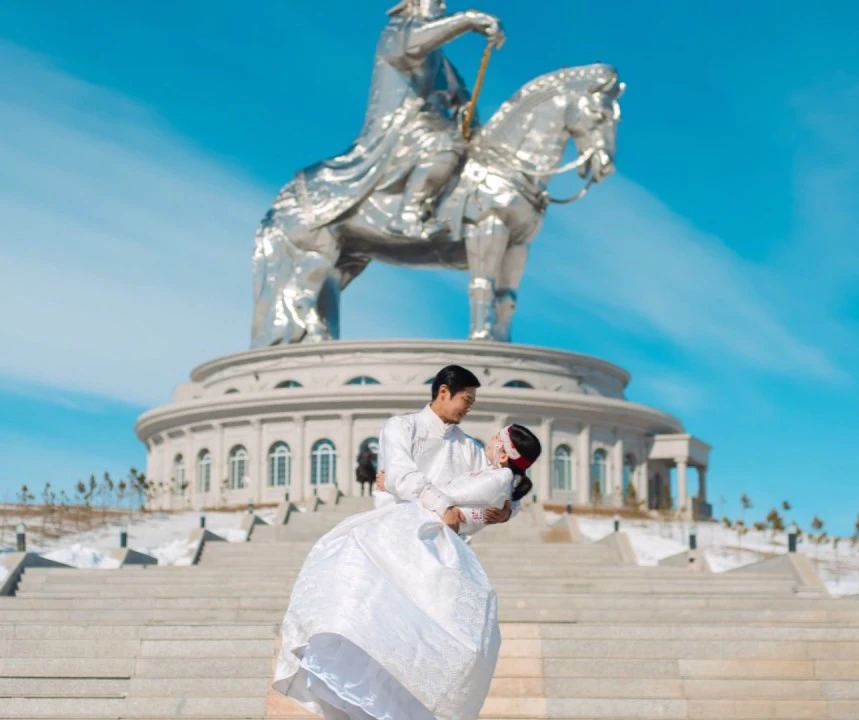Wedding ceremonies among nomads vary according to the customs of the ethnic group or groups to which the bride and the groom belong. All weddings, however, must take place on an auspicious day, as advised by a local lama after he consults a traditional lunar calendar. Before negotiating the wedding date, relatives of the groom arrive at the bride’s house (or ger) with a load of presents. Historically, livestock made up the primary gifts, and in the countryside, this tradition continues. The number of livestock given depends on the wealth of the groom’s family, but an odd number of animals are always presented to the bride’s family (e.g. 7, 9, or 11). Her father is given special presents (including a pot of glue) symbolizing the strength of the future relationship between his daughter and the new husband. If the bride’s parents accept all these gifts, they are agreeing to the wedding. At this point, both parties then discuss the date of the ceremony and consider the couple formally engaged.
In the countryside, a groom-to-be prepares his new ger with the assistance of his parents. The future bride’s responsibilities include buying cooking pots and cleaning materials, preparing the stove in the new home, particularly the layer of felt on the ger ceiling. Tradition clearly defines who completes each task. A man always takes care of the walls and wooden furniture. On the day of the wedding ceremony, the groom visits the bridal family with an elderly, respected member of the local community. When the two men arrive at the in-laws’ door, they find it locked and must persuade the family to open the door by uttering wise, appealing words. Once they have charmed their way into the home, the hosts provide them with Mongolian dairy products and meat, as they approach the new bride. The family then utters phrases such as “the deer hunter (husband) is ours and the sable weaver seamstress (wife) is yours; we hold both their fates in our hands and these fates have to be merged.”
The bride, dressed in her most elegant deel, follows the groom and his companion to her new home, followed by her own closest friends. The party arrives at the ger on horseback, where a carpet is rolled out from the entrance to welcome them. The bride tradition¬ally enters her new ger by noon and a huge meal begins, with the father offering the first toast of the groom. For the rest of the day the two families, their relatives, and friends sing, eat, and drink to celebrate the wedding, all sitting around a large ceremonial table.
The next morning the new bride has to open the smoke holes of her own ger and the ger belonging to her in-laws. Three days later her own parents visit the new couple.



